七年级下>Module 1 Lost and found>Unit 1 Whose bag is this?
文档属性
| 名称 | 七年级下>Module 1 Lost and found>Unit 1 Whose bag is this? | 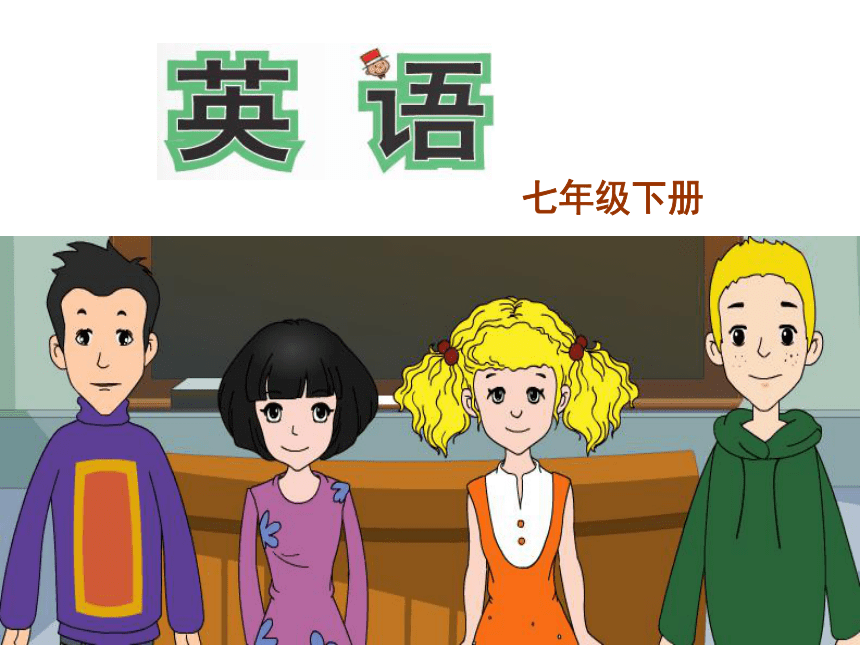 | |
| 格式 | zip | ||
| 文件大小 | 2.3MB | ||
| 资源类型 | 教案 | ||
| 版本资源 | 外研版 | ||
| 科目 | 英语 | ||
| 更新时间 | 2013-02-25 10:02:45 | ||
图片预览

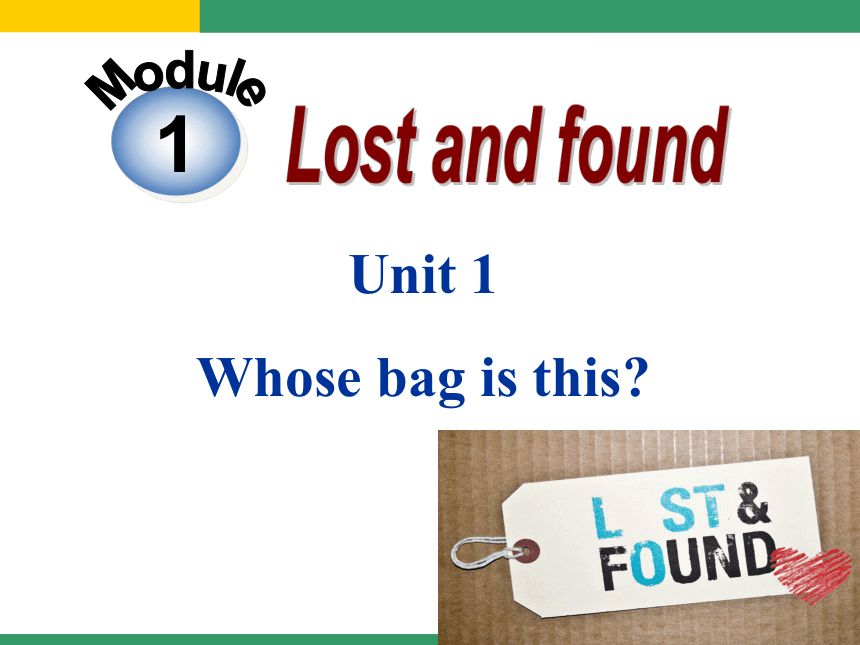
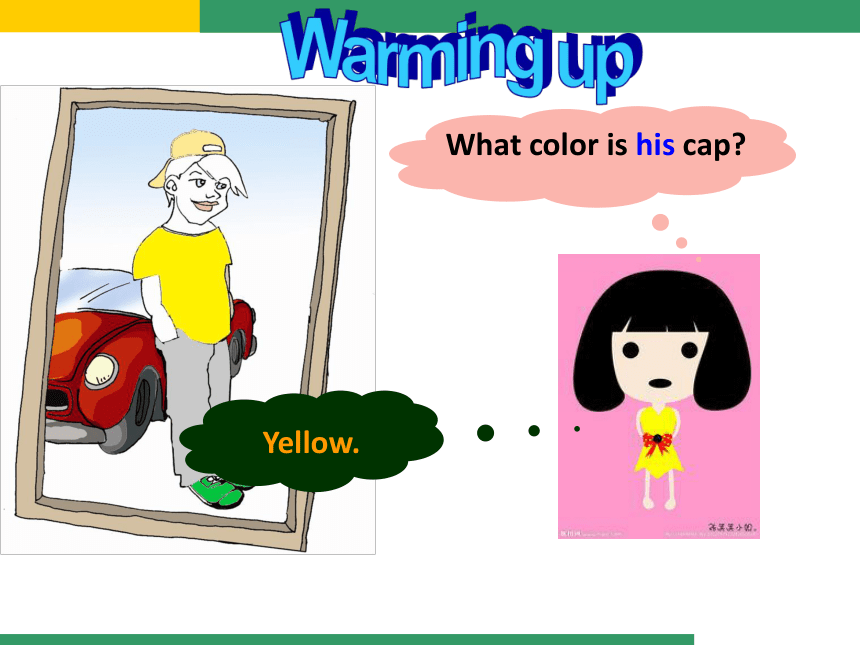
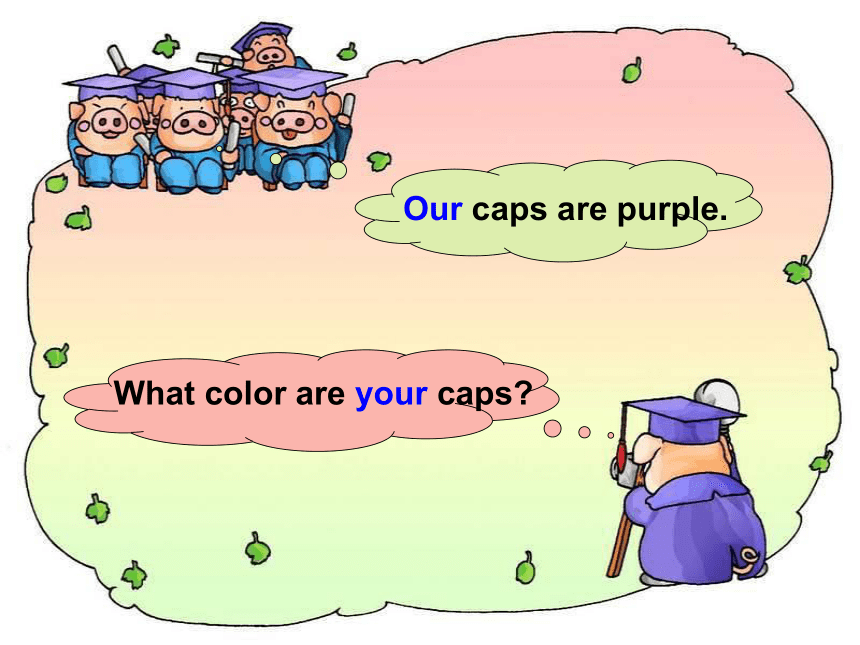
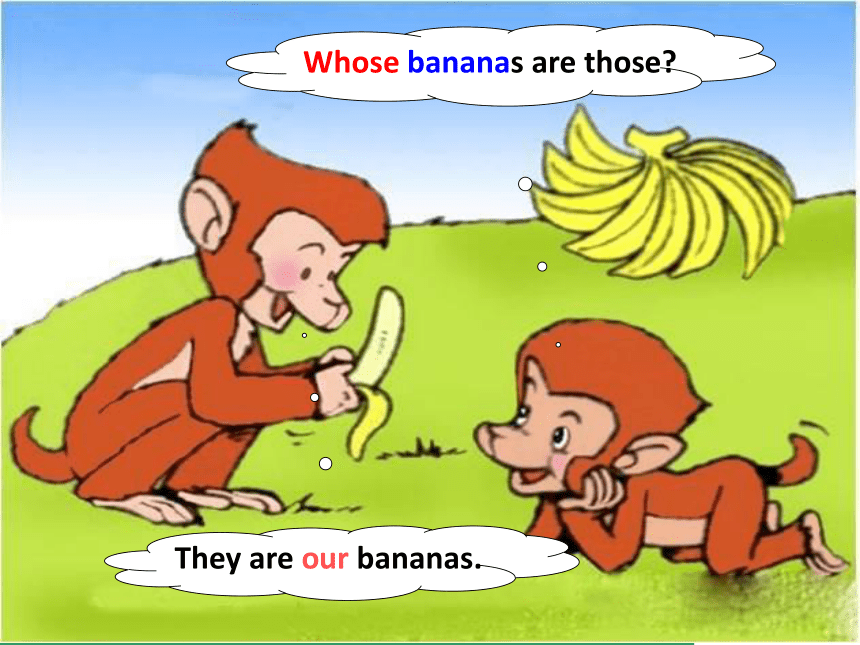
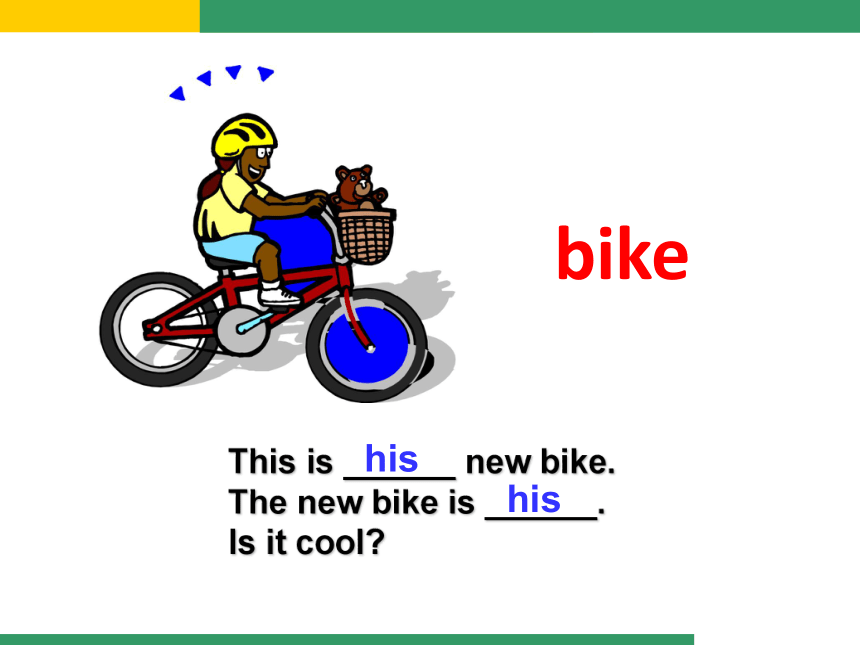
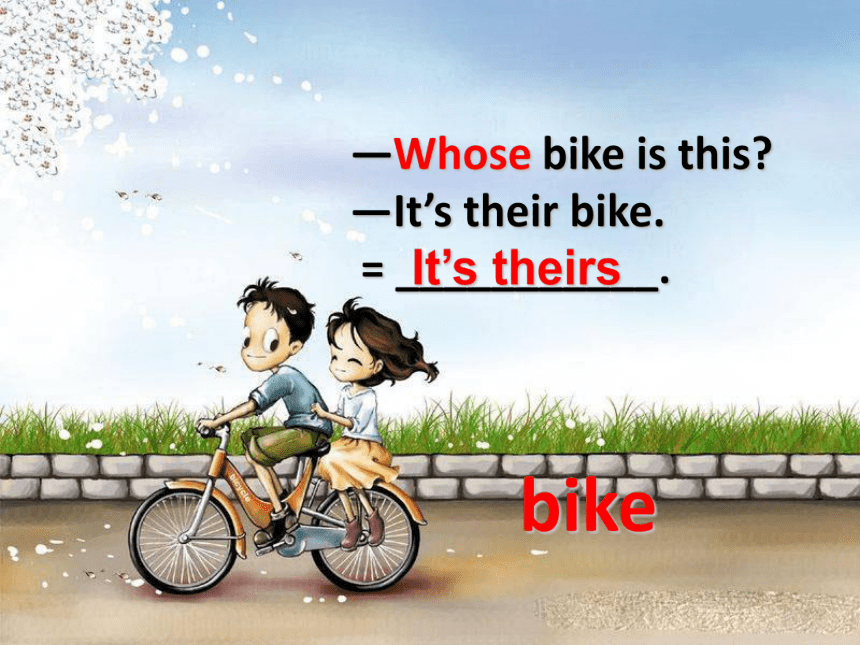
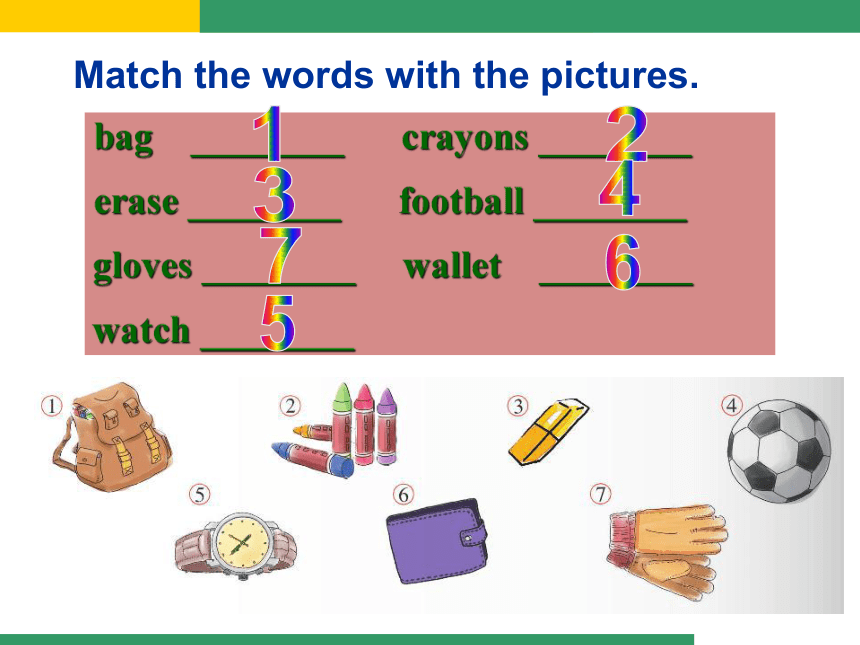
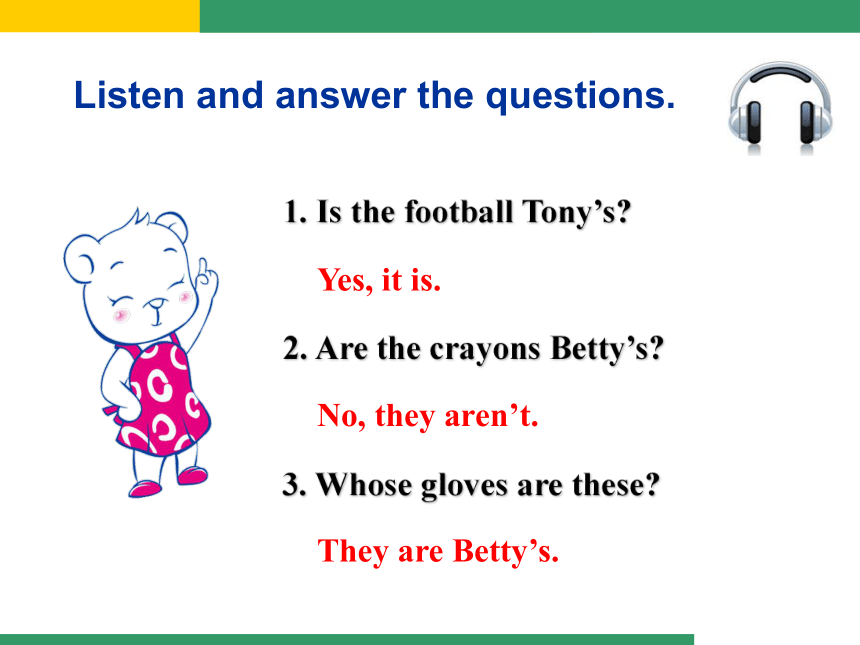
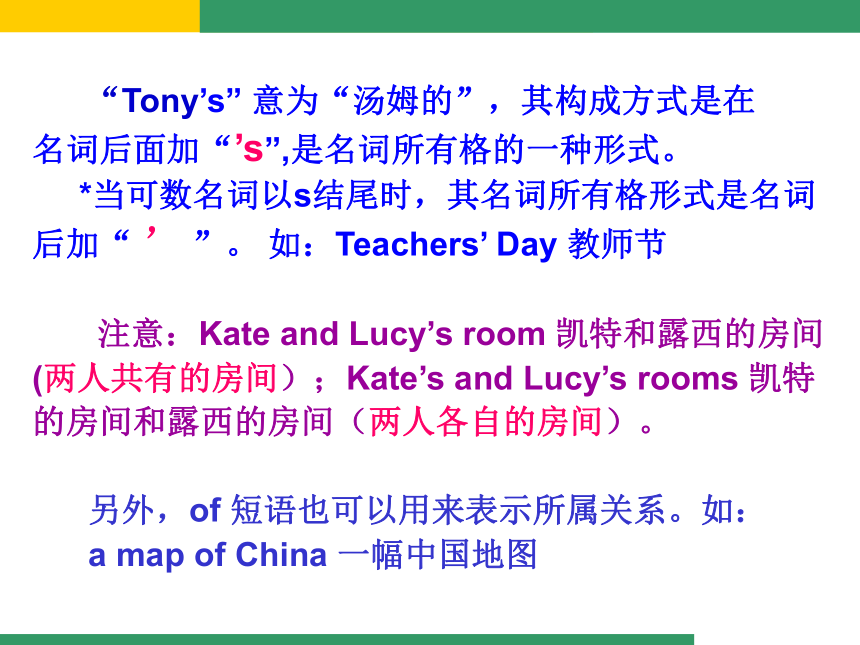
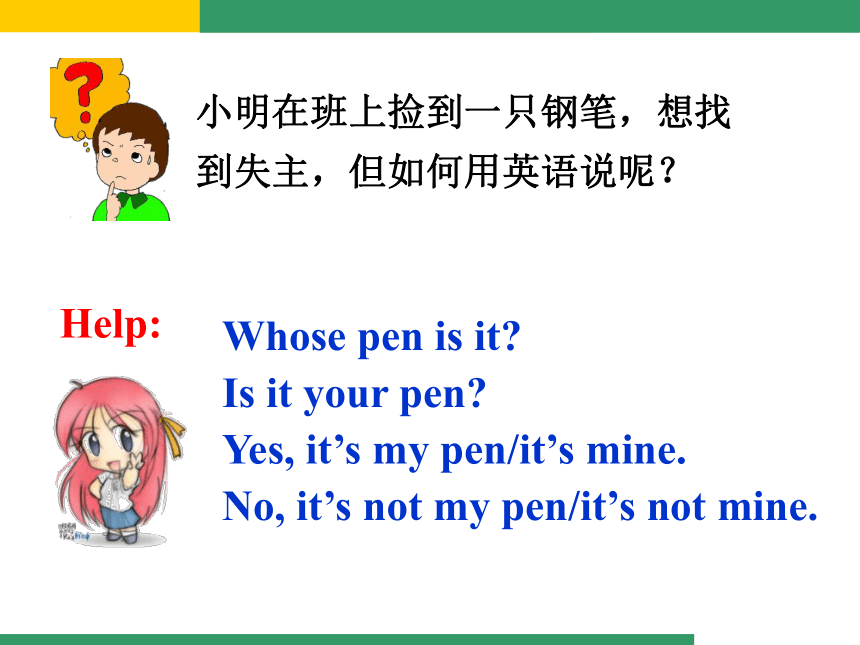

文档简介
(共33张PPT)
1
Unit 1
Whose bag is this
What color is his cap
Yellow.
What color are your caps
Our caps are purple.
Whose bananas are those
They are our bananas.
This is ______ new bike.
The new bike is ______.
Is it cool
his
his
bike
bike
—Whose bike is this
—It’s their bike.
= ___________.
It’s theirs
Match the words with the pictures.
bag ________ crayons ________
erase ________ football ________
gloves ________ wallet ________
watch ________
Listen and answer the questions.
1. Is the football Tony’s
2. Are the crayons Betty’s
3. Whose gloves are these
Yes, it is.
No, they aren’t.
They are Betty’s.
“Tony’s” 意为“汤姆的”,其构成方式是在
名词后面加“’s”,是名词所有格的一种形式。
*当可数名词以s结尾时,其名词所有格形式是名词
后加“ ’ ”。 如:Teachers’ Day 教师节
注意:Kate and Lucy’s room 凯特和露西的房间
(两人共有的房间);Kate’s and Lucy’s rooms 凯特
的房间和露西的房间(两人各自的房间)。
另外,of 短语也可以用来表示所属关系。如:
a map of China 一幅中国地图
小明在班上捡到一只钢笔,想找
到失主,但如何用英语说呢?
Help:
Whose pen is it
Is it your pen
Yes, it’s my pen/it’s mine.
No, it’s not my pen/it’s not mine.
Everyday English
● Welcome back!
● please be careful
with …from now on.
Listen and read.
Ms Li: Welcome back to school, everyone! First of all, come
and look in the lost and found box! There are a lot of
things in it. Whose bag is this
Ling: Oh sorry! It’s mine. Are my crayons there too
Ms Li: Are these crayons yours
Ling: Yes, they are and this eraser too. Thank you.
Ms Li: Whose tapes are these
Daming: They’re mine.
Ms Li: Here’s a purple wallet!
Tony: It’s mine. Look! Here’s my name “Tony”! Thank you.
Ms Li: You’re welcome! Look at this nice watch. Is it
yours too, Daming
Daming: No, it isn’t. I think it’s Betty’s.
Ling: Yes, it’s hers.
Ms Li: Everyone, please be careful with your things from
now on.
Daming: Here are some nice gloves. Whose gloves are they
Ms Li: Let me see… Oh, they’re mine!
Thank you!
—Whose bag is this
它是谁的包呢?
— Oh, sorry! It’s mine.
哦,不好意思,是我的!
这是由疑问词whose引导的一个特殊疑问句。
whose意为“谁的”,表示所属关系,在句中既可
单独使用,也可与名词连用;其答语用名词性物
主代词或名词所有格。如:
— Whose T-shirt is this = Whose is this T-shirt
—It’s hers. / It’s Sally’s.
名词性物主代词
A: Whose bananas are these
B: They are its bananas.
They are its.
A: Whose shoes are those
B: They are our shoes.
They are ours.
A: Whose apples are these
B: They are their apples.
They are theirs.
A: Whose toys are those
B: They are your toys.
They are yours.
Match the people with their things
1. Lingling a) crayons
2. Daming b) gloves
3. Tony c) tapes
4. Betty d) wallet
5. Ms Li e) watch
1. First of all, come and look in the lost and found box!
首先,看看失物招领箱吧!
“first of all” 表示“首先”,常常放在句首,通常情况也可以用firstly等替换。
e.g.: First of all, let me introduce my friends Mike to you.
Firstly, I would like to thank all of you for supporting me these past couple of weeks.
首先,我想感谢过去几个星期一直陪伴我,让我坚强地走出悲痛的所有人。
2. Everyone, please be careful with your things from now on.
从现在开始请大家小心保管自己的物品。
“be careful with…” 意思是“小心……”,此时的be cafeful 等同于 look out.
Please be careful with your money.
“from now on” 表示“从现在开始”。
e.g.: From now on, students need much more time to rest.
Pharses
first of all 首先
lost and found
失物招领箱
a lot of/lots of
大量,许多
a lot
很,非常
Monkeys like eating bananas a lot.
辨析:watch,look,look at与see
1、watch是及物动词,意思是“观看;注视”,常用来指看电视、看球赛、看戏等。
2、look为不及物动词,单独使用,用以引起对方的注意。
3、look at是由动词look和介词at组成的词组,后面可以带宾语,侧重“看”的动作。
4、see为及物动词,意为“看见”,侧重“看”的结果。
Work in pairs. Ask and answer.
---- Are the crayons Betty’s
---- No, they’re not hers. They’re Lingling’s.
用自己的文具做道具,
用以上句型两人一组编对话。
A: Whose bag is it
B: It’s mine.
A: Is this your bag
B: Yes, it’s my bag./it’s mine.
No, it’s not my bag./
it’s not mine.
careful hers mine purple tape yours
Complete the passage.
Ms Li: Lingling’s bag is in the lost and found box.
The crayons are(1)_______too. Daming’s
(2)_______and Tony’s(3)_________wallet are here.
Is the watch(4)_______, Daming Please be
(5)________with your things! And whose gloves are
these Oh sorry. They’re (6)________.
hers
tape
purple
yours
careful
mine
Is this your cap Is this cap yours
—Is this your cap
—No, it’s not mine.
=No, it’s not my cap
yours=your cap mine=my cap
—Is this cap yours
—Oh, yes. It’s mine.
=Oh, yes. It’s my cap.
=
我的······ mine = my + n.
你的······ yours = your + n.
他的······ his = his + n.
她的······ hers = her + n.
它的······ its = its + n.
我们的······ ours = our + n.
你们的······ yours = your + n.
他们的······ theirs = their + n.
名词性物主代词=形容词性物主代词+名词
数
类 人
别 称 单 数 复 数
第一
人称 第二
人称 第三
人称 第一
人称 第二
人称 第三
人称
形容
词性 my your his
her
its our your their
名
词
性 mine yours his
hers
its ours yours theirs
汉语 我的 你的 他/她/它的 我们的 你们的 他/她/们的
Listen and repeat.
/ / back bag thank
/e / eraser name
/ / wallet watch
Writing- look at the picture and write “Lost and Found”.
Lost and found
….
1. 名词性物主代词=形容词性物主代词+名词
2. 名词的所有格形式
例如:Tom——Tom’s
Li Ming——Li Ming’s
the students——the students’
例如:mine = my + n.
你会用物主代词谈论自己的学习用品吗?快来试试吧!
别忘了预习下一课哦!
1
Unit 1
Whose bag is this
What color is his cap
Yellow.
What color are your caps
Our caps are purple.
Whose bananas are those
They are our bananas.
This is ______ new bike.
The new bike is ______.
Is it cool
his
his
bike
bike
—Whose bike is this
—It’s their bike.
= ___________.
It’s theirs
Match the words with the pictures.
bag ________ crayons ________
erase ________ football ________
gloves ________ wallet ________
watch ________
Listen and answer the questions.
1. Is the football Tony’s
2. Are the crayons Betty’s
3. Whose gloves are these
Yes, it is.
No, they aren’t.
They are Betty’s.
“Tony’s” 意为“汤姆的”,其构成方式是在
名词后面加“’s”,是名词所有格的一种形式。
*当可数名词以s结尾时,其名词所有格形式是名词
后加“ ’ ”。 如:Teachers’ Day 教师节
注意:Kate and Lucy’s room 凯特和露西的房间
(两人共有的房间);Kate’s and Lucy’s rooms 凯特
的房间和露西的房间(两人各自的房间)。
另外,of 短语也可以用来表示所属关系。如:
a map of China 一幅中国地图
小明在班上捡到一只钢笔,想找
到失主,但如何用英语说呢?
Help:
Whose pen is it
Is it your pen
Yes, it’s my pen/it’s mine.
No, it’s not my pen/it’s not mine.
Everyday English
● Welcome back!
● please be careful
with …from now on.
Listen and read.
Ms Li: Welcome back to school, everyone! First of all, come
and look in the lost and found box! There are a lot of
things in it. Whose bag is this
Ling: Oh sorry! It’s mine. Are my crayons there too
Ms Li: Are these crayons yours
Ling: Yes, they are and this eraser too. Thank you.
Ms Li: Whose tapes are these
Daming: They’re mine.
Ms Li: Here’s a purple wallet!
Tony: It’s mine. Look! Here’s my name “Tony”! Thank you.
Ms Li: You’re welcome! Look at this nice watch. Is it
yours too, Daming
Daming: No, it isn’t. I think it’s Betty’s.
Ling: Yes, it’s hers.
Ms Li: Everyone, please be careful with your things from
now on.
Daming: Here are some nice gloves. Whose gloves are they
Ms Li: Let me see… Oh, they’re mine!
Thank you!
—Whose bag is this
它是谁的包呢?
— Oh, sorry! It’s mine.
哦,不好意思,是我的!
这是由疑问词whose引导的一个特殊疑问句。
whose意为“谁的”,表示所属关系,在句中既可
单独使用,也可与名词连用;其答语用名词性物
主代词或名词所有格。如:
— Whose T-shirt is this = Whose is this T-shirt
—It’s hers. / It’s Sally’s.
名词性物主代词
A: Whose bananas are these
B: They are its bananas.
They are its.
A: Whose shoes are those
B: They are our shoes.
They are ours.
A: Whose apples are these
B: They are their apples.
They are theirs.
A: Whose toys are those
B: They are your toys.
They are yours.
Match the people with their things
1. Lingling a) crayons
2. Daming b) gloves
3. Tony c) tapes
4. Betty d) wallet
5. Ms Li e) watch
1. First of all, come and look in the lost and found box!
首先,看看失物招领箱吧!
“first of all” 表示“首先”,常常放在句首,通常情况也可以用firstly等替换。
e.g.: First of all, let me introduce my friends Mike to you.
Firstly, I would like to thank all of you for supporting me these past couple of weeks.
首先,我想感谢过去几个星期一直陪伴我,让我坚强地走出悲痛的所有人。
2. Everyone, please be careful with your things from now on.
从现在开始请大家小心保管自己的物品。
“be careful with…” 意思是“小心……”,此时的be cafeful 等同于 look out.
Please be careful with your money.
“from now on” 表示“从现在开始”。
e.g.: From now on, students need much more time to rest.
Pharses
first of all 首先
lost and found
失物招领箱
a lot of/lots of
大量,许多
a lot
很,非常
Monkeys like eating bananas a lot.
辨析:watch,look,look at与see
1、watch是及物动词,意思是“观看;注视”,常用来指看电视、看球赛、看戏等。
2、look为不及物动词,单独使用,用以引起对方的注意。
3、look at是由动词look和介词at组成的词组,后面可以带宾语,侧重“看”的动作。
4、see为及物动词,意为“看见”,侧重“看”的结果。
Work in pairs. Ask and answer.
---- Are the crayons Betty’s
---- No, they’re not hers. They’re Lingling’s.
用自己的文具做道具,
用以上句型两人一组编对话。
A: Whose bag is it
B: It’s mine.
A: Is this your bag
B: Yes, it’s my bag./it’s mine.
No, it’s not my bag./
it’s not mine.
careful hers mine purple tape yours
Complete the passage.
Ms Li: Lingling’s bag is in the lost and found box.
The crayons are(1)_______too. Daming’s
(2)_______and Tony’s(3)_________wallet are here.
Is the watch(4)_______, Daming Please be
(5)________with your things! And whose gloves are
these Oh sorry. They’re (6)________.
hers
tape
purple
yours
careful
mine
Is this your cap Is this cap yours
—Is this your cap
—No, it’s not mine.
=No, it’s not my cap
yours=your cap mine=my cap
—Is this cap yours
—Oh, yes. It’s mine.
=Oh, yes. It’s my cap.
=
我的······ mine = my + n.
你的······ yours = your + n.
他的······ his = his + n.
她的······ hers = her + n.
它的······ its = its + n.
我们的······ ours = our + n.
你们的······ yours = your + n.
他们的······ theirs = their + n.
名词性物主代词=形容词性物主代词+名词
数
类 人
别 称 单 数 复 数
第一
人称 第二
人称 第三
人称 第一
人称 第二
人称 第三
人称
形容
词性 my your his
her
its our your their
名
词
性 mine yours his
hers
its ours yours theirs
汉语 我的 你的 他/她/它的 我们的 你们的 他/她/们的
Listen and repeat.
/ / back bag thank
/e / eraser name
/ / wallet watch
Writing- look at the picture and write “Lost and Found”.
Lost and found
….
1. 名词性物主代词=形容词性物主代词+名词
2. 名词的所有格形式
例如:Tom——Tom’s
Li Ming——Li Ming’s
the students——the students’
例如:mine = my + n.
你会用物主代词谈论自己的学习用品吗?快来试试吧!
别忘了预习下一课哦!
同课章节目录
- Module 1 Lost and found
- Unit 1 Whose bag is this?
- Unit 2 Are they yours?
- Unit 3 Language in use
- Module 2 What can you do ?
- Unit 1 I can play the piano
- Unit 2 I can run really fast
- Unit 3 Language in use
- Module 3 Making plans
- Unit 1 What are you going to do at the weekends?
- Unit 2 We're going to cheer the players.
- Unit 3 Language in use
- Module 4 Life in the future
- Unit 1 Everyone will study at home
- Unit 2 Every family will have a small plane.
- Unit 3 Language in use
- Module 5 Shopping
- Unit 1 What can I do for you?
- Unit 2 You can buy everything on the Internet
- Unit 3 Language in use
- Module 6 Around town
- Unit 1 Could you tell me how to get to the Nationa
- Unit 2 The London Eye is on your right.
- Unit 3 Language in use
- Revision module A
- Module 7 My past life
- Unit 1 I was born in a small village.
- Unit 2 I was born in Quincy.
- Unit 3 Language in use
- Module 8 Story time
- Unit 1 Once upon a time….
- Unit 2 Goldilocks hurried out of the house.
- Unit 3 Language in use
- Module 9 Life history
- Unit 1 He left school and began work at the age of
- Unit 2 He decided to be an actor.
- Unit 3 Language in use
- Module 10 A holiday journey
- Unit 1 What did you do?
- Unit 2 This morning we took a walk.
- Unit 3 Language in use
- Module 11 Body language
- Unit 1 They touch noses!
- Unit 2 Here are some ways to welcome them.
- Unit 3 Language in use
- Module 12 Western music
- Unit 1 It's so beautiful!
- Unit 2 Vienna is the centre of European classical
- Unit 3 Language in use
- Revision module B
